“Dancing in the Moonlight” by King Harvest remains an evergreen classic, a song that instantly evokes feelings of joy and carefree nights. But behind its upbeat melody and dreamy lyrics, lies a poignant and unexpected tale of resilience and the power of imagination. This article delves into the story of “Dancing in the Moonlight,” exploring the lyrics, the journey of King Harvest, and the songwriter Sherman Kelly’s incredible inspiration for this beloved track.
Sherman Kelly, the man behind the magic of “Dancing in the Moonlight,” never initially envisioned it as a chart-topping hit. In fact, the song’s origins are rooted in a traumatic experience far removed from the song’s celebratory vibe. The genesis of the lyrics and the melody emerged from a dark episode in Kelly’s life, transforming personal adversity into a universally loved anthem of optimism.
From Trauma to Tune: The Genesis of “Dancing in the Moonlight” Lyrics
In 1969, Sherman Kelly found himself in St. Croix, Virgin Islands, running a nightclub. A day trip to St. Croix took a harrowing turn when Kelly and his girlfriend were left stranded and vulnerable after Kelly’s seasickness led to them missing their boat back. Seeking shelter for the night, they were brutally attacked by a local gang while sleeping on the beach. Kelly endured a severe beating, and his girlfriend suffered a horrific assault.
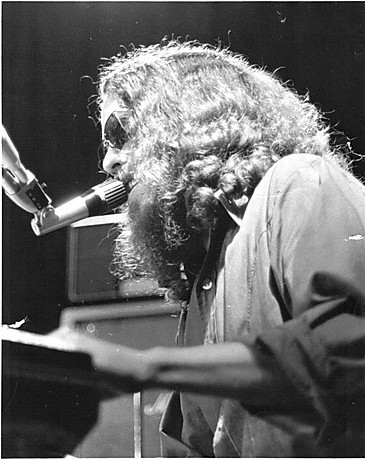 Alt text: Sherman Kelly performing live in the 1970s, showcasing his musical talent and stage presence.
Alt text: Sherman Kelly performing live in the 1970s, showcasing his musical talent and stage presence.
This horrific experience, where Kelly himself was unsure if he would survive his hospital stay, became the unlikely catalyst for “Dancing in the Moonlight.” During his convalescence back home in Ithaca, New York, amidst pain and headaches, Kelly sought refuge in songwriting. He envisioned an “alternate reality,” a world away from the violence and fear he had encountered. This vision became the emotional core of the lyrics for “Dancing in the Moonlight.”
“I envisioned an alternate reality, the dream of a peaceful and joyous celebration of life,” Kelly explained, reflecting on the song’s creation. “It was just me imagining a better world than the one I had just experienced in St. Croix.”
The lyrics, therefore, are not just about dancing under the moon; they are about escaping to a place of peace and joy, a dreamscape created in response to real-world trauma. This depth of emotion, contrasting sharply with the song’s upbeat tempo, is part of what gives “Dancing in the Moonlight” its enduring appeal.
Boffalongo’s Version: The First Dance in the Moonlight
Before King Harvest made “Dancing in the Moonlight” a household name, the song was first recorded by Boffalongo, a band Sherman Kelly joined in 1970. This band included his brother Wells Kelly and future Orleans member Larry Hoppen. The Boffalongo version, featured on their album “Beyond Your Head,” offered a regional taste of the song’s potential. Sherman Kelly himself sang lead vocals on this initial rendition.
However, Kelly is self-deprecating about his vocal performance on the Boffalongo version, humorously recounting a studio experience involving ill-advised cocaine use that negatively impacted his recording. Despite Kelly’s personal critique, the Boffalongo version gained regional popularity, proving the inherent appeal of the song and its lyrics.
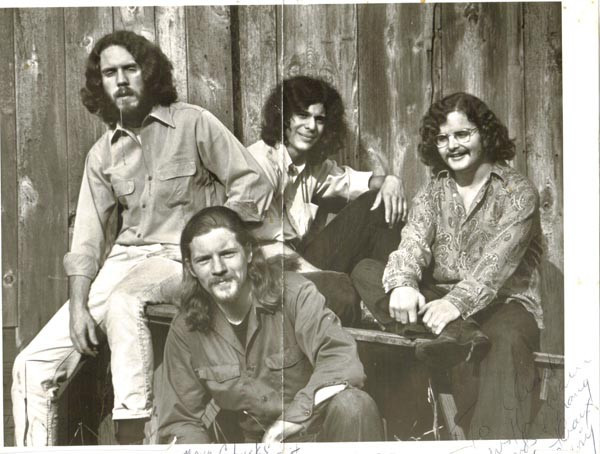 Alt text: Boffalongo band photograph circa 1970, highlighting the early musical collaboration of Sherman Kelly and Larry Hoppen.
Alt text: Boffalongo band photograph circa 1970, highlighting the early musical collaboration of Sherman Kelly and Larry Hoppen.
Another group, High Broom, also recorded “Dancing in the Moonlight” in 1970, further indicating the song’s burgeoning recognition within the music scene. Yet, it was King Harvest who would ultimately catapult the song to national and international fame.
King Harvest’s Chart-Topping Success with “Dancing in the Moonlight”
When Boffalongo disbanded, Wells Kelly joined King Harvest, a band formed in Paris. It was Wells who introduced “Dancing in the Moonlight” to his new bandmates. King Harvest, fronted by lead singer Doc Robinson (also a former member of Boffalongo), recorded their version of the song, and it was this rendition that resonated with audiences on a massive scale.
Released as a single in 1972, King Harvest’s “Dancing in the Moonlight” became a breakout hit. It climbed the charts, reaching No. 10 on the Cash Box Top 100 and No. 13 on the Billboard Hot 100. The song’s infectious rhythm, coupled with the escapist and joyful lyrics, made it a staple of 1970s radio and a soundtrack to countless summer nights.
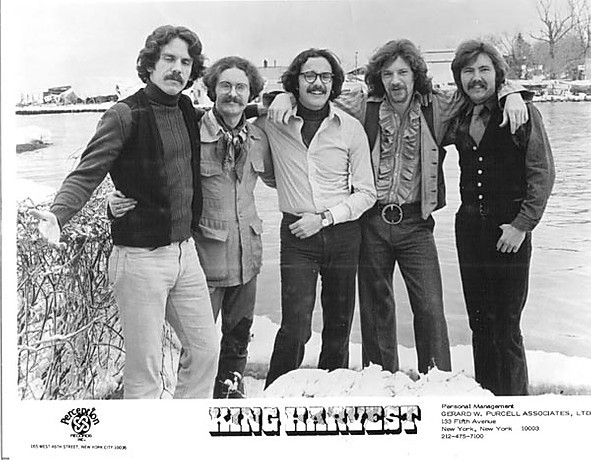 Alt text: King Harvest band members in 1972 publicity shot, the year their version of “Dancing in the Moonlight” became a major hit.
Alt text: King Harvest band members in 1972 publicity shot, the year their version of “Dancing in the Moonlight” became a major hit.
Sherman Kelly briefly toured with King Harvest during their summer of success, providing harmony vocals while Doc Robinson handled the lead. Despite enjoying the initial excitement of touring, Kelly found the lifestyle unsustainable. He was, at heart, more of a songwriter than a performer.
The Enduring Moonlight: Orleans and Toploader Versions
The story of “Dancing in the Moonlight” doesn’t end with King Harvest. The song’s timeless appeal has led to multiple successful covers, further cementing its place in music history. Orleans, formed by Wells Kelly and Larry Hoppen after their Boffalongo days, also recorded their version of “Dancing in the Moonlight,” keeping the song alive for new generations of listeners.
In 2000, Toploader, a British band, released a cover of “Dancing in the Moonlight” that became a major hit in Europe and beyond. Toploader’s version introduced the song to a new millennium, demonstrating its ability to transcend generations and musical trends. The song has also been featured in films, television shows, and video games, including “Guardians of the Galaxy,” ensuring its continued presence in popular culture.
Sherman Kelly: Life Beyond the Moonlight
While “Dancing in the Moonlight” remains Sherman Kelly’s most famous creation, his life and career extend far beyond this single hit. A graduate of Cornell University with degrees in psychology and English, Kelly pursued further studies in Paris, Switzerland, and New York City. Following the tragic death of his brother Wells in 1984, Sherman Kelly transitioned away from the demanding music industry, earning a master’s degree in social work and psychotherapy. He dedicated many years to working as a psychotherapist, using his understanding of the human psyche to help others.
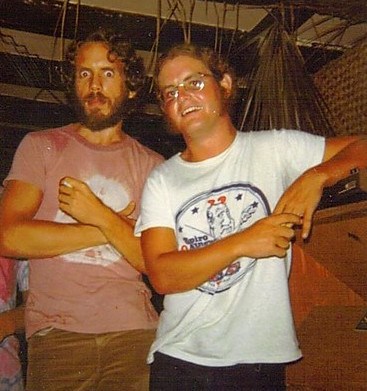 Alt text: Sherman Kelly (left) with Larry Hoppen in an older photo, highlighting their long-term musical relationship from Boffalongo to Orleans.
Alt text: Sherman Kelly (left) with Larry Hoppen in an older photo, highlighting their long-term musical relationship from Boffalongo to Orleans.
In 2008, Kelly returned to his musical roots, releasing an album titled “Burnin’ the Candle,” which included collaborations with his late brother Wells. This release showcased his continued songwriting talent and offered a glimpse into other facets of his musical creativity.
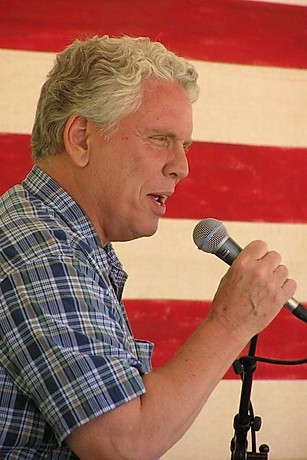 Alt text: Sherman Kelly pictured in a recent photo, reflecting on his career as a songwriter and psychotherapist.
Alt text: Sherman Kelly pictured in a recent photo, reflecting on his career as a songwriter and psychotherapist.
“Dancing in the Moonlight,” with its deceptively simple lyrics and joyful melody, stands as a testament to the power of music to transform personal experience into universal expression. From its dark origins in a traumatic event to its bright journey to becoming a beloved classic, the song’s story is as captivating as the tune itself. Sherman Kelly’s ability to envision “a better world” in the face of adversity is the heart of “Dancing in the Moonlight,” making it a song that continues to resonate and inspire listeners to this day.
